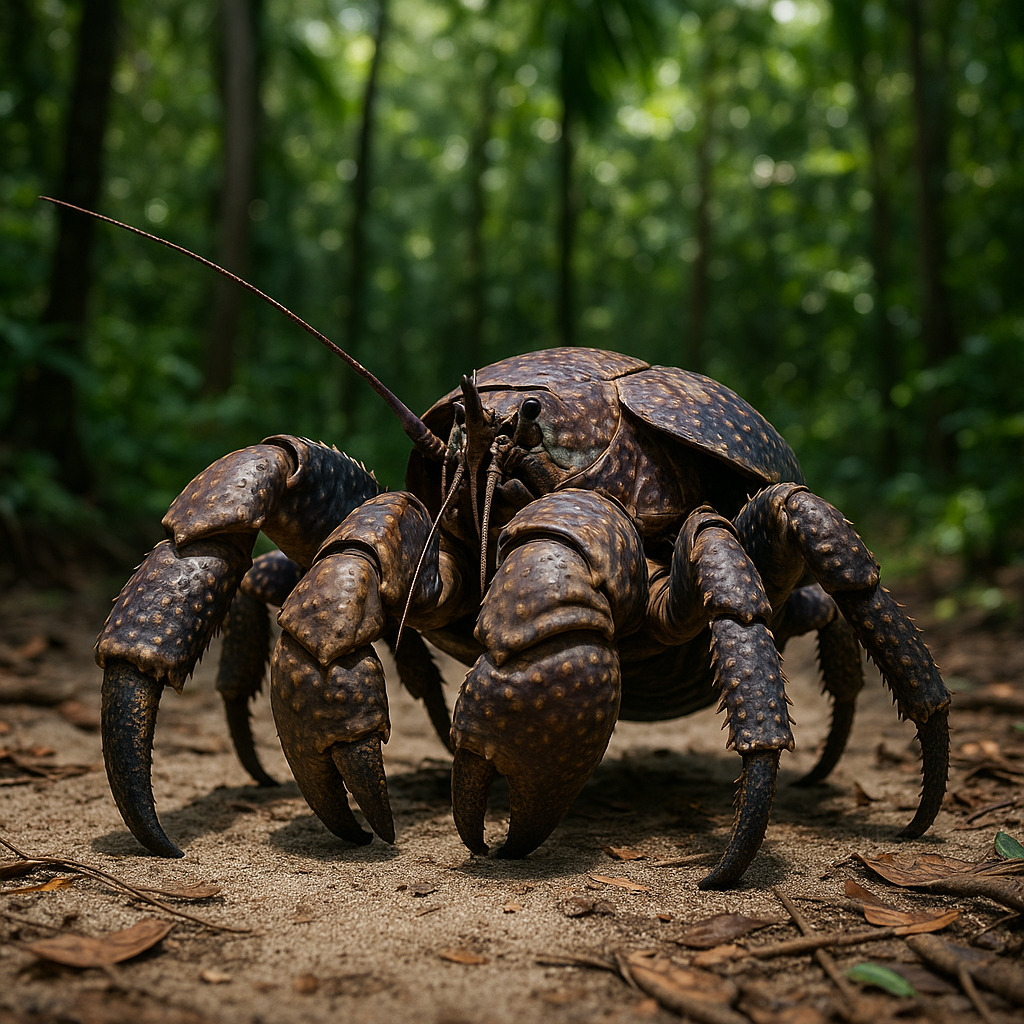When we think of giant animals, our imagination immediately leaps to dinosaurs—prehistoric titans that symbolize the pinnacle of size in the animal kingdom. This perception has been reinforced by school textbooks, documentaries, and popular culture, often leaving us with the belief that gigantism is a phenomenon confined to the past or to the mysterious depths of the oceans.
Yet, there are terrestrial creatures that challenge these expectations. A prime example is the Coconut Crab (Birgus latro), also known as the robber crab or palm thief—the largest terrestrial arthropod on Earth. This remarkable species thrives in tropical environments, quietly guarding some of nature’s most astonishing secrets.
A Habitat Between Land and Sea
The Coconut Crab inhabits oceanic islands across the Indo-Pacific region, from the eastern coast of Africa to the central Pacific islands. Locations like the Seychelles, Christmas Island, and Kiribati are well-known habitats. It prefers coastal zones and tropical forests, where it takes shelter in natural cavities, under roots, or in self-dug burrows lined with coconut fibers to retain moisture.
Despite being terrestrial, the Coconut Crab requires humid environments to prevent dehydration. Its respiratory system features modified gills, known as branchiostegal lungs, which have evolved into a primitive lung system allowing it to breathe air efficiently.
Biology and Extraordinary Strength
The Coconut Crab can weigh up to 4 kilograms (9 pounds) and span over 1 meter (3 feet) across its legs. Its claws are legendary, capable of exerting a pinch force of over 3300 Newtons—comparable to the bite of a lion. These powerful claws allow it to crack open coconuts with precision, making it one of the few animals capable of such a feat.
Anatomically, the Coconut Crab is unique: in its juvenile stage, it behaves like a typical hermit crab, using empty shells for protection. As it matures, it abandons this behavior, developing a hardened, calcified exoskeleton that offers robust defense.
Reproduction and Metamorphosis
The Coconut Crab’s reproduction cycle is a fascinating blend of land and sea. After mating, females carry fertilized eggs under their abdomen for about a month before migrating to the shoreline to release the larvae into the ocean. In this marine phase, the larvae float as plankton for several weeks.
Once their oceanic stage concludes, the young crabs return to land, where, like true hermit crabs, they seek temporary shelter in empty shells. As they grow, they eventually abandon the shells, completing their metamorphosis into fully terrestrial giants.
Habits and Longevity
The Coconut Crab is primarily nocturnal. During the day, it remains hidden in its burrow to avoid dehydration, venturing out at night to forage. Its diet is omnivorous and opportunistic, including fruits (especially coconuts and mangoes), seeds, carrion, and even other crabs.
Impressively, the Coconut Crab can live up to 60 years, making it not only a giant but also one of the longest-living arthropods. However, its slow growth and long lifespan make it vulnerable to overharvesting by humans in certain regions.
Gigantism Today: Not Just a Memory
The Coconut Crab is a stunning reminder that nature’s giants still walk among us. While marine behemoths like the blue whale remain unmatched in size, land-based giants such as the Coconut Crab demonstrate that gigantism continues to evolve in remarkable ways.
Other examples of terrestrial gigantism include the giant tortoises of the Galápagos and the Komodo dragon, each a testament to nature’s ability to push the limits of size and adaptation. These creatures invite us to marvel at the wonders of evolution and remind us that the age of giants is far from over.








Leave a Comment